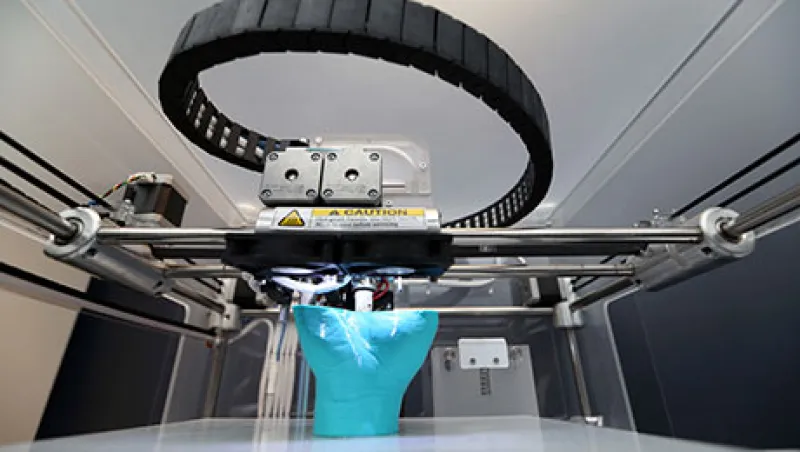For having dared to bring fire from Olympus to warm humankind, the Titan Prometheus was chained to a rock, where an eagle tore out his liver every day — or so the myth goes. Every night his liver grew anew. His punishment was expressly designed by the Greek gods so that he would feel the difference between his own immortal body and the mortal bodies of human beings as painfully as possible. From that myth came Mary Shelley’s gothic novel Frankenstein — whose protagonist created an artificial assemblage of stolen body parts seeking only to be recognized as a human being — and, much later, the movie Prometheus.
In the 2012 film, directed by Ridley Scott, a crew of explorers heads out into space to find the Titan-like aliens who made humankind so that they will reveal the secret of fabricating new bodies. The explorers fail, violently and spectacularly, but as with so many recent endeavors in tech, a cultural obsession — in this case with the body, its limitations and its singularity — has led to an achievement on the order of myth itself. None of us are Titans: We can’t easily replace everything we lose, from our livers to our eyeballs. But we could become Titan-like, with the help of 3-D bioprinting.
Bioprinting works much like ordinary 3-D printing, but it uses inks made of pastes of living cells and water-based gels to construct swatches of tissue and even organs. Cells are cultured, then layered together with extraordinary precision to create scaffolded structures within which they replicate and grow. The process is fast and elegant: Liver tissue, for instance, can be synthesized in less than an hour. Flatter structures like cartilage and skin are even faster.
Complex organs like the heart or a whole liver still elude researchers, despite recent breakthroughs in the synthesis of vascular systems by scientists at Stanford, Harvard and the University of Pennsylvania, whose group recently printed such a system out of sugar. Artificial hearts remain an as yet incalculable distance away, but miniorgans that can be added to weak or failing organs in the body are already in use. Other applications include the use of printed tissues to synthesize compounds like insulin and to accelerate healing (think, in the latter case, of bandages made of functional skin).
The bioprinting industry, and biotechnology more generally, has already experienced a massive lift from these advances. According to the consulting group EY (formerly known as Ernst & Young), funding for biotechnology companies rose sharply in 2013, and more than 300 percent more companies went public in the U.S. and Canada that year than in 2012. As bioprinting advances, more opportunities for investors in these technologies — as well as the manufacturing of the bioprinting devices and the new markets for health services they will open — will certainly appear. Where should investors look?
Leading the field at the moment is Organovo Holdings, a San Diego–based public company founded by one of the first scientists to attempt to print cells (originally on an old laserjet printer, no less). Organovo focuses largely on producing tissues for use in transplants and drug trials. It has successfully implanted tissue and even organs (bladders, for example, which are easier to fabricate than other organs because of their simple, hollow structure). Organovo’s products are intended to shorten the time it takes new drugs to reach market, since cells printed in the lab respond much as does real, or native, tissue. They might also reduce the amount of animal testing performed on new drugs and allow researchers to throw out formulations that would not be workable in humans much earlier.
The consequences for biotech, health care, pharmaceuticals and related industries should be dramatic. Among conventional pharma companies, for instance, market share may be determined by the speed with which bioprinting technologies are incorporated into a company’s research and manufacturing arms. One can rest assured that Johnson & Johnson and other players in wound and post- and presurgical care are likely working with the development of products reliant on bioprinting.
There are already many places to seek out opportunities in advance of bioprinting’s rise to prominence. Swiss company regenHU builds several products — adorably named BioFactory and 3DDiscovery — in wide use for bioprinting and experiments in bioengineering using 3-D printing technology. There is also a range of smaller companies, including Philadelphia-based BioBots, currently attempting to capitalize on the attention the technology is attracting. BioBots’ printer resembles a tallish toaster oven and can produce, the company claims, an array of biological materials incubated under ultraviolet or blue light and boasts an estimated $25,000 price point (beta testers can get the printer for $5,000). Speedy production of biological and biomechanical devices, the company claims, should allow scientists to employ rapid prototyping into their design and production flows.
Where else might one look? The biotech supply chain is decidedly opaque to those outside the industry, but a bit of intrepid research into Carolina Biological Supply Co., one of the largest suppliers of agar and other needful supplies for the production of bio-inks, might also yield promising results. And other 3-D printing companies and devices — say, Eden Prairie, Minnesota–based Stratasys, or the wildly popular RepRap, used by the UPenn scientists to make their sugar vasculature — should continue to thrive as 3-D printing works its way into every aspect of our lives, including our bodies. Whatever may be the case in these specific instances, bioprinting is by no means the stuff of myth (or the contemporary myths we call science fiction) anymore. We may not be immortal, but our Promethean present, in which we can replace and regenerate bits of mortal bodies, is now.






